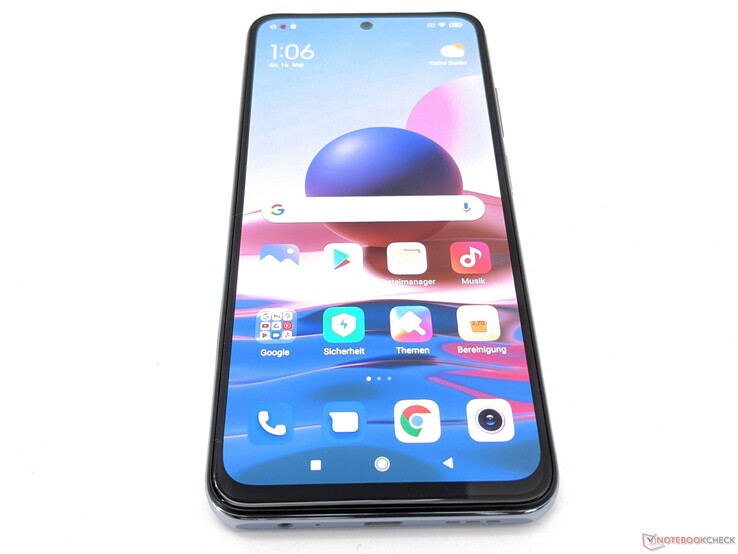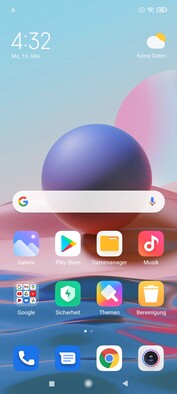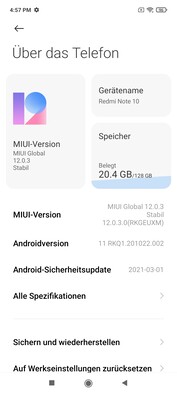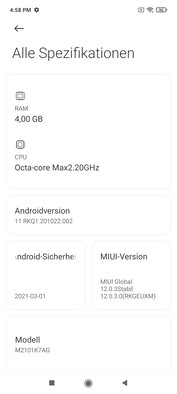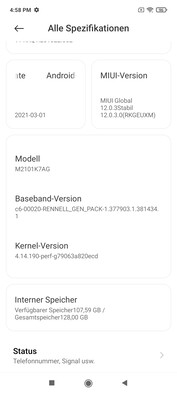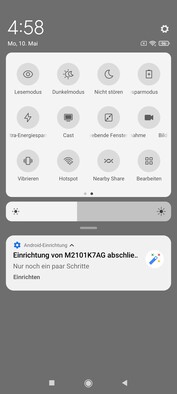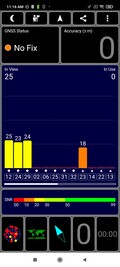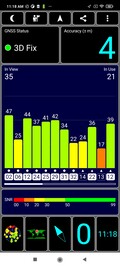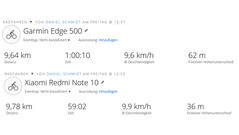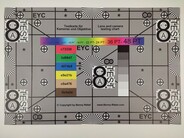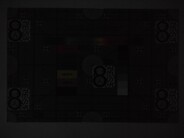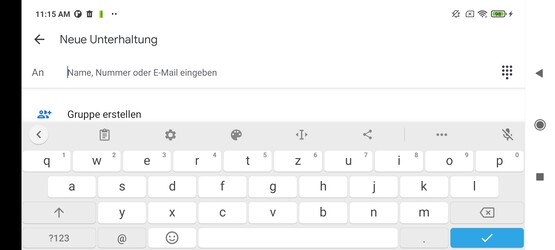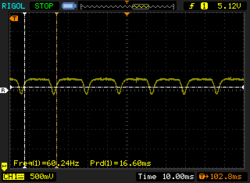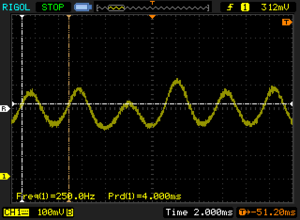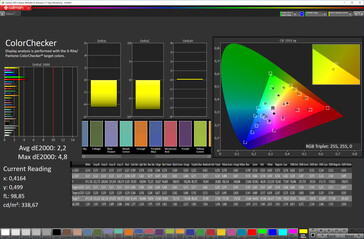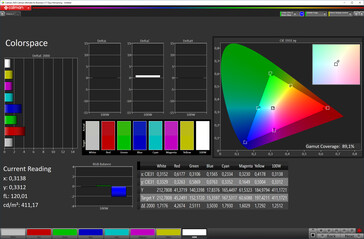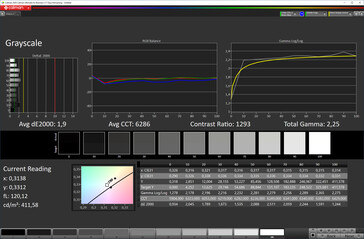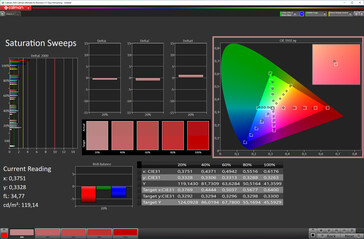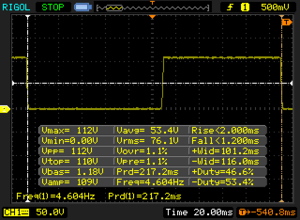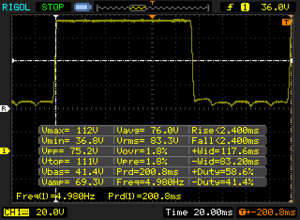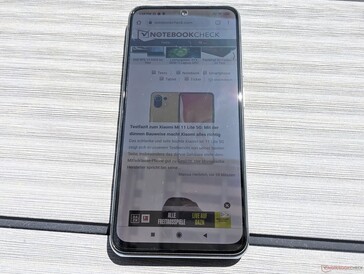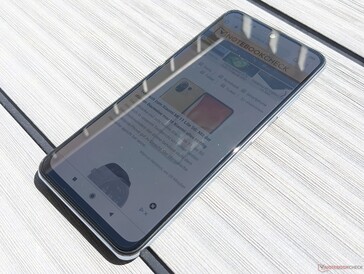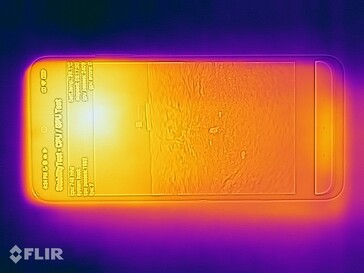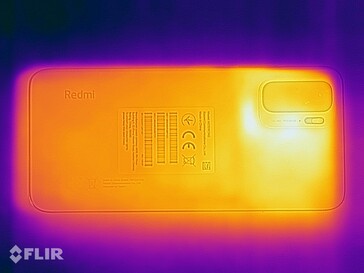Xiaomi Redmi Note 10 smartphone in review: IP-certified smartphone for under 200 Euros
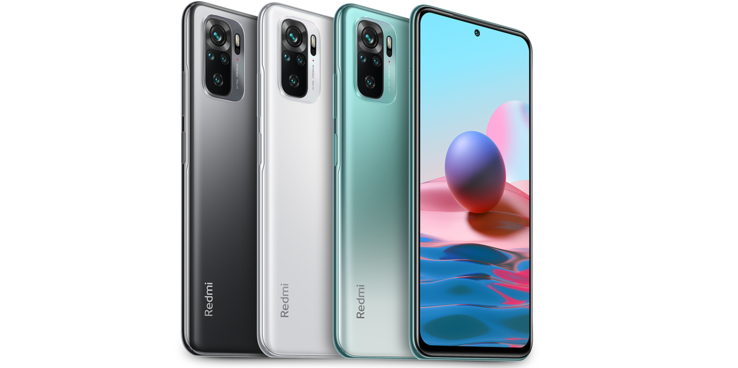
After our review of the Redmi Note 9, we described the budget phone as the ideal entry into the world of smartphones. Now, we have with us the successor model that costs just under 200 Euros (~$244) and comes with 4 GB of RAM and 128 GB of internal storage, and we'll have to see whether it can also earn this title. The new Qualcomm Snapdragon 678 SoC, which has an integrated Adreno 612 graphics unit, should help with that.
With these specs, we put the Xiaomi Redmi Note 10 up against the rival devices listed below. Other smartphones from our database can also be added for comparison under each section.
Possible contenders in comparison
Rating | Date | Model | Weight | Drive | Size | Resolution | Price |
|---|---|---|---|---|---|---|---|
| 80.5 % v7 (old) | 05 / 2021 | Xiaomi Redmi Note 10 SD 678, Adreno 612 | 178.8 g | 128 GB UFS 2.2 Flash | 6.43" | 2400x1080 | |
| 79.9 % v7 (old) | 09 / 2020 | Xiaomi Redmi Note 9 Helio G85, Mali-G52 MP2 | 199 g | 64 GB eMMC Flash | 6.53" | 2340x1080 | |
| 77.6 % v7 (old) | 04 / 2021 | Motorola Moto G30 SD 662, Adreno 610 | 197 g | 128 GB eMMC Flash | 6.50" | 1600x720 | |
| 79.9 % v7 (old) | 01 / 2021 | Vivo Y70 SD 665, Adreno 610 | 171 g | 128 GB UFS 2.0 Flash | 6.44" | 2400x1080 | |
| 81.7 % v7 (old) | 05 / 2021 | Realme 8 Helio G95, Mali-G76 MP4 | 177 g | 128 GB UFS 2.1 Flash | 6.40" | 2400x1080 |
Case - Redmi phone protected against dust and splashing water
The design of the Redmi Note 10 is very attractive, and the smartphone has a high-quality build. The back and the frame are made of plastic, while the front is protected by Corning Gorilla Glass 3. In addition, the case is protected against dust and splashing water according to the IP53 standard, but it's not completely waterproof.
With a weight of approximately 179 g, the Note 10 is slightly lighter than the Redmi Note 9 predecessor. At the same time, the dimensions are on par with comparable smartphones.
Connectivity - Xiaomi smartphone with infrared sensor
Xiaomi equips the Redmi Note 10 with either 64 or 128 GB of internal storage. A microSD card slot is also available for storage expansion. It's located in the same tray as the two nano SIM slots, which also support VoLTE and VoWLAN.
A USB-C port that uses the 2.0 standard is also available for wired data transfers. A 3.5 mm audio jack and an infrared sensor are also included. The Camera2 API is enabled with Level 3, and DRM Widevine L1 is supported. However, Xiaomi refrains from using NFC.
microSD card reader
The memory card reader of the Xiaomi Redmi Note 10 copies data at a moderate speed of 14.32 MB/s to our Toshiba Exceria Pro M501 reference memory card. Good rates of up to 91.6 MB/s are achieved for sequential reading, but only a much lower maximum of 49.6 MB/s for writing.
| SD Card Reader - average JPG Copy Test (av. of 3 runs) | |
| Xiaomi Redmi Note 10 (Toshiba Exceria Pro M501) | |
Cross Platform Disk Test (CPDT)
Software - MIUI 12 with a bit of advertisement
Xiaomi uses the in-house MIUI 12, which is based on Android 11, in the Redmi Note 10. Its operation is similar to that of a pure Android system, but many customized apps and menu structures have been implemented. In addition, there are ads, which we could notice, for example, in the file manager after manually installing apps. Furthermore, numerous third-party applications are installed, but they can be removed without any issues.
Communication and GNSS - Wi-Fi 5 isn't that fast
The Redmi Note 10 can establish mobile connections over GSM, 3G, and LTE networks. LTE Cat. 12 enables data transfer rates of up to 600 Mb/s for downloads and up to 100 Mb/s for uploads.
In close ranges, Xiaomi's budget smartphone can make use of Bluetooth 5.0 and Wi-Fi 5. With our Netgear Nighthawk AX12 reference router, we reach speeds of 246 Mb/s on average for receiving data and 287 Mb/s on average for transferring data. This leaves the Redmi Note 10 in last place in our test field along with the Motorola Moto G30.
| Networking | |
| iperf3 transmit AX12 | |
| Xiaomi Redmi Note 9 | |
| Realme 8 | |
| Vivo Y70 | |
| Xiaomi Redmi Note 10 | |
| Motorola Moto G30 | |
| iperf3 receive AX12 | |
| Xiaomi Redmi Note 9 | |
| Vivo Y70 | |
| Realme 8 | |
| Motorola Moto G30 | |
| Xiaomi Redmi Note 10 | |
The Redmi Note 10 can determine its location using GPS, GLONASS, BeiDou, and Galileo. We achieved an accuracy of up to four meters outdoors with the GPS Test app. In contrast, indoor positioning is not possible.
On our routine bike ride, the Xiaomi smartphone tracks the covered distance a bit more accurately than our reference device, the Garmin Edge 500.
Telephone and call quality - Good connection with the Redmi Note 10
The Redmi Note 10's phone app offers direct access to saved favorites and a numeric keypad. Two additional tabs provide access to recent calls and the contacts list. Both parties can be understood well during the call, and ambient noise is filtered out as long as it's not too loud.
Cameras - Quad-camera setup delivers good pictures
The front-facing camera of the Redmi Note 10 offers portrait shots with a resolution of 13 MP. Pictures are slightly softened in the default settings, which causes details that are actually clearly recognizable to look a bit blurry. Colors are reproduced naturally, and a special portrait mode allows the adjustment of a bokeh effect before the picture is taken.
The main camera takes photos with a 48 MP sensor plus a 2 MP sensor for depth information. In good lighting conditions, subjects captured with it look very natural and show many details. This also applies to panorama shots, although dark image areas turn out a bit too dark here. The ultra wide-angle sensor offers 8 MP; it reproduces object edges with a slight blur and uniform surfaces with a subtle graininess. In low-light conditions, objects in the image only turn out blurry as well, and they are too dark. A 2 MP sensor is still available for macro shots, but it delivers rather mediocre results. Moreover, an optical zoom is not available, but a Pro mode that allows individual modifications to the settings is provided.
Videos are recorded with a similar quality as that shown by our sample photos. The available resolutions and frame rates are 720p at 30 fps, 1080p at 30 and 60 fps, and 4K at 30 fps. In addition, there's a time-lapse and a slow-motion mode, with the latter offering frame rates of 120, 240, or 960 fps at a resolution of 720p.
Image comparison
Choose a scene and navigate within the first image. One click changes the position on touchscreens. One click on the zoomed-in image opens the original in a new window. The first image shows the scaled photograph of the test device.
Main cameraPanoramaUltra wide angleZoom (5x)Low lightThe test photo with the ColorChecker Passport shows that the Redmi Note 10's camera captures black and yellow tones close to the original ones, but the other colors are either a bit too bright or too dark.
Our test chart is also photographed with a lot of details at the center of the image, but it shows a somewhat weak contrast and slight blurriness towards the edges.
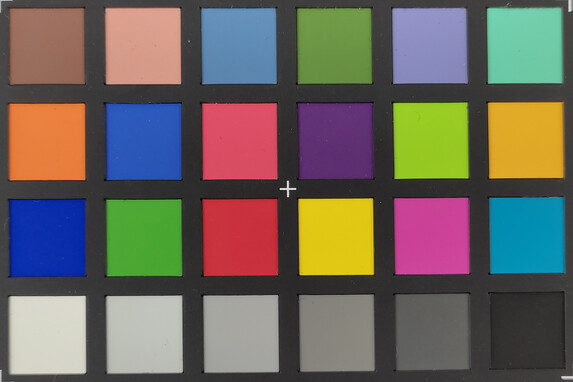

Accessories and warranty - Protective case included in the box
The Redmi Note 10 comes with a USB power adapter with a compatible USB-C cable, a SIM needle, and a protective silicone case. Additional general accessories can also be purchased in the manufacturer's MI Shop.
Xiaomi grants buyers of the Redmi Note 10 a 24-month warranty period.
Input devices and handling - Reliable fingerprint scanner in the power button
Users of the Redmi Note 10 can use Google's GBoard to enter text. The touchscreen responds very reliably to inputs, and drag-and-drop gestures can also be performed relatively well. A fingerprint sensor on the right side of the device is used to unlock the smartphone; it responded very well to stored fingerprints in our test. Moreover, face recognition is also available.
Display - Bright AMOLED display in the Redmi Note 10
The Redmi Note 10's screen consists of a 6.43-inch AMOLED panel with a resolution of 2400x1080 pixels. The maximum brightness of 693 cd/m² on average when the sensor is enabled is above the scores of the rest of our test field. In the APL50 test, an even higher 987 cd/m² is achieved. The brightness still reaches 433 cd/m² with the sensor deactivated and 2.42 cd/m² at the lowest luminance level.
We also measure PWM starting at brightness levels below 69% within a frequency range between 113.6 and 250 Hz. Above that, we only detect the panel's refresh rate of 60 Hz.
| |||||||||||||||||||||||||
Brightness Distribution: 98 %
Center on Battery: 695 cd/m²
Contrast: ∞:1 (Black: 0 cd/m²)
ΔE ColorChecker Calman: 2.2 | ∀{0.5-29.43 Ø4.79}
ΔE Greyscale Calman: 1.9 | ∀{0.09-98 Ø5}
89.1% sRGB (Calman 2D)
Gamma: 2.25
CCT: 6286 K
| Xiaomi Redmi Note 10 AMOLED, 2400x1080, 6.4" | Xiaomi Redmi Note 9 IPS LCD, 2340x1080, 6.5" | Motorola Moto G30 LCD IPS, 1600x720, 6.5" | Vivo Y70 AMOLED, 2400x1080, 6.4" | Realme 8 Super AMOLED, 2400x1080, 6.4" | |
|---|---|---|---|---|---|
| Screen | -37% | -44% | -19% | -20% | |
| Brightness middle (cd/m²) | 695 | 553 -20% | 284 -59% | 573 -18% | 590 -15% |
| Brightness (cd/m²) | 693 | 527 -24% | 263 -62% | 572 -17% | 607 -12% |
| Brightness Distribution (%) | 98 | 89 -9% | 83 -15% | 97 -1% | 92 -6% |
| Black Level * (cd/m²) | 0.12 | 0.34 | |||
| Colorchecker dE 2000 * | 2.2 | 3.8 -73% | 2.92 -33% | 2.7 -23% | 2.64 -20% |
| Colorchecker dE 2000 max. * | 4.8 | 8.7 -81% | 5.06 -5% | 4.9 -2% | 6.85 -43% |
| Greyscale dE 2000 * | 1.9 | 2.2 -16% | 3.6 -89% | 2.9 -53% | 2.4 -26% |
| Gamma | 2.25 98% | 2.3 96% | 2.307 95% | 2.19 100% | 2.265 97% |
| CCT | 6286 103% | 6727 97% | 6780 96% | 6665 98% | 6913 94% |
| Contrast (:1) | 4608 | 835 |
* ... smaller is better
Screen Flickering / PWM (Pulse-Width Modulation)
| Screen flickering / PWM detected | 250 Hz | ≤ 69 % brightness setting | |
The display backlight flickers at 250 Hz (worst case, e.g., utilizing PWM) Flickering detected at a brightness setting of 69 % and below. There should be no flickering or PWM above this brightness setting. The frequency of 250 Hz is relatively low, so sensitive users will likely notice flickering and experience eyestrain at the stated brightness setting and below. In comparison: 53 % of all tested devices do not use PWM to dim the display. If PWM was detected, an average of 8167 (minimum: 5 - maximum: 343500) Hz was measured. | |||
As is typical for OLED technologies, the black level of the Redmi Note 10 is 0 cd/m², and the contrast ratio is excellent. The CalMAN analysis also shows that the display shows colors in a very balanced way in the "Standard" profile.
Display Response Times
| ↔ Response Time Black to White | ||
|---|---|---|
| 3.2 ms ... rise ↗ and fall ↘ combined | ↗ 2 ms rise | |
| ↘ 1.2 ms fall | ||
| The screen shows very fast response rates in our tests and should be very well suited for fast-paced gaming. In comparison, all tested devices range from 0.1 (minimum) to 240 (maximum) ms. » 13 % of all devices are better. This means that the measured response time is better than the average of all tested devices (20.3 ms). | ||
| ↔ Response Time 50% Grey to 80% Grey | ||
| 4.8 ms ... rise ↗ and fall ↘ combined | ↗ 2.4 ms rise | |
| ↘ 2.4 ms fall | ||
| The screen shows very fast response rates in our tests and should be very well suited for fast-paced gaming. In comparison, all tested devices range from 0.165 (minimum) to 636 (maximum) ms. » 15 % of all devices are better. This means that the measured response time is better than the average of all tested devices (31.7 ms). | ||
The Xiaomi smartphone can be used well outdoors as long as places in the shade are favored. Although image content can also be recognized in direct sunlight, glare and reflections make it difficult to look at the display.
Performance - Suitable for everyday use
Xiaomi uses Qualcomm's new mid-range Snapdragon 678 SoC with an integrated Adreno 612 graphics unit in the Redmi Note 10. It offers enough performance for smooth system operation and can easily handle many everyday tasks. However, there are only a few resources available for demanding applications.
In most of the disciplines in our benchmarks, the Android smartphone can place itself in the midfield of our chosen comparison devices. The system runs smoothly in everyday use, and short delays only happen occasionally like when launching applications, for example.
| PCMark for Android | |
| Work performance score (sort by value) | |
| Xiaomi Redmi Note 10 | |
| Xiaomi Redmi Note 9 | |
| Motorola Moto G30 | |
| Average Qualcomm Snapdragon 678 (n=1) | |
| Work 2.0 performance score (sort by value) | |
| Xiaomi Redmi Note 10 | |
| Xiaomi Redmi Note 9 | |
| Motorola Moto G30 | |
| Vivo Y70 | |
| Realme 8 | |
| Average Qualcomm Snapdragon 678 (n=1) | |
| GFXBench (DX / GLBenchmark) 2.7 | |
| T-Rex Onscreen (sort by value) | |
| Xiaomi Redmi Note 10 | |
| Motorola Moto G30 | |
| Vivo Y70 | |
| Average Qualcomm Snapdragon 678 (n=1) | |
| Average of class Smartphone (12 - 166, n=153, last 2 years) | |
| 1920x1080 T-Rex Offscreen (sort by value) | |
| Xiaomi Redmi Note 10 | |
| Motorola Moto G30 | |
| Vivo Y70 | |
| Average Qualcomm Snapdragon 678 (n=1) | |
| Average of class Smartphone (22 - 831, n=153, last 2 years) | |
| GFXBench 3.0 | |
| on screen Manhattan Onscreen OGL (sort by value) | |
| Xiaomi Redmi Note 10 | |
| Motorola Moto G30 | |
| Vivo Y70 | |
| Average Qualcomm Snapdragon 678 (n=1) | |
| Average of class Smartphone (18 - 166, n=155, last 2 years) | |
| 1920x1080 1080p Manhattan Offscreen (sort by value) | |
| Xiaomi Redmi Note 10 | |
| Motorola Moto G30 | |
| Vivo Y70 | |
| Average Qualcomm Snapdragon 678 (n=1) | |
| Average of class Smartphone (12 - 502, n=154, last 2 years) | |
| GFXBench 3.1 | |
| on screen Manhattan ES 3.1 Onscreen (sort by value) | |
| Xiaomi Redmi Note 10 | |
| Motorola Moto G30 | |
| Vivo Y70 | |
| Average Qualcomm Snapdragon 678 (n=1) | |
| Average of class Smartphone (11 - 166, n=155, last 2 years) | |
| 1920x1080 Manhattan ES 3.1 Offscreen (sort by value) | |
| Xiaomi Redmi Note 10 | |
| Motorola Moto G30 | |
| Vivo Y70 | |
| Average Qualcomm Snapdragon 678 (n=1) | |
| Average of class Smartphone (8.4 - 413, n=154, last 2 years) | |
| AnTuTu v8 - Total Score (sort by value) | |
| Xiaomi Redmi Note 10 | |
| Motorola Moto G30 | |
| Average Qualcomm Snapdragon 678 (n=1) | |
| VRMark - Amber Room (sort by value) | |
| Xiaomi Redmi Note 10 | |
| Xiaomi Redmi Note 9 | |
| Average Qualcomm Snapdragon 678 (n=1) | |
| AImark - Score v2.x (sort by value) | |
| Xiaomi Redmi Note 10 | |
| Motorola Moto G30 | |
| Average Qualcomm Snapdragon 678 (n=1) | |
| Basemark GPU 1.2 | |
| 1920x1080 OpenGL Medium Offscreen (sort by value) | |
| Xiaomi Redmi Note 10 | |
| Xiaomi Redmi Note 9 | |
| Average Qualcomm Snapdragon 678 (n=1) | |
| Average of class Smartphone (9.08 - 382, n=51, last 2 years) | |
| OpenGL Medium Native (sort by value) | |
| Xiaomi Redmi Note 10 | |
| Xiaomi Redmi Note 9 | |
| Average Qualcomm Snapdragon 678 (n=1) | |
| Average of class Smartphone (13.8 - 301, n=49, last 2 years) | |
| 1280x720 Vulkan Simple Offscreen (sort by value) | |
| Xiaomi Redmi Note 10 | |
| Xiaomi Redmi Note 9 | |
| Average Qualcomm Snapdragon 678 (n=1) | |
| Average of class Smartphone (70.3 - 1796, n=48, last 2 years) | |
| 1920x1080 Vulkan Medium Offscreen (sort by value) | |
| Xiaomi Redmi Note 10 | |
| Xiaomi Redmi Note 9 | |
| Average Qualcomm Snapdragon 678 (n=1) | |
| Average of class Smartphone (8.75 - 355, n=50, last 2 years) | |
| Vulkan Medium Native (sort by value) | |
| Xiaomi Redmi Note 10 | |
| Xiaomi Redmi Note 9 | |
| Average Qualcomm Snapdragon 678 (n=1) | |
| Average of class Smartphone (13.4 - 303, n=50, last 2 years) | |
The Xiaomi Redmi Note 10 can place itself at the top of our test field in the browser benchmarks. The performance in everyday use is correspondingly good. Websites scroll smoothly, and media content is loaded quickly.
| Jetstream 2 - 2.0 Total Score | |
| Average of class Smartphone (23.8 - 387, n=150, last 2 years) | |
| Average Qualcomm Snapdragon 678 (n=1) | |
| Xiaomi Redmi Note 10 (Chrome 90) | |
| Motorola Moto G30 (Chrome89) | |
| Xiaomi Redmi Note 9 (Chrome 85) | |
| JetStream 1.1 - Total Score | |
| Xiaomi Redmi Note 10 (Chrome 90) | |
| Average Qualcomm Snapdragon 678 (n=1) | |
| Xiaomi Redmi Note 9 (Chrome 85) | |
| Motorola Moto G30 (Chrome89) | |
| Speedometer 2.0 - Result 2.0 | |
| Average of class Smartphone (15.2 - 643, n=130, last 2 years) | |
| Average Qualcomm Snapdragon 678 (n=1) | |
| Xiaomi Redmi Note 10 (Chrome 90) | |
| Motorola Moto G30 (Chrome89) | |
| Xiaomi Redmi Note 9 (Chrome 85) | |
| WebXPRT 3 - Overall | |
| Average of class Smartphone (38 - 380, n=41, last 2 years) | |
| Xiaomi Redmi Note 10 (Chrome 90) | |
| Average Qualcomm Snapdragon 678 (n=1) | |
| Motorola Moto G30 (Chrome89) | |
| Xiaomi Redmi Note 9 (Chrome 85) | |
| Octane V2 - Total Score | |
| Average of class Smartphone (2228 - 121337, n=198, last 2 years) | |
| Xiaomi Redmi Note 10 (Chrome 90) | |
| Average Qualcomm Snapdragon 678 (n=1) | |
| Xiaomi Redmi Note 9 (Chrome 85) | |
| Motorola Moto G30 (Chrome89) | |
| Mozilla Kraken 1.1 - Total | |
| Motorola Moto G30 (Chrome89) | |
| Xiaomi Redmi Note 9 (Chrome 85) | |
| Xiaomi Redmi Note 10 (Chrome 90) | |
| Average Qualcomm Snapdragon 678 (n=1) | |
| Average of class Smartphone (257 - 28190, n=153, last 2 years) | |
* ... smaller is better
According to Xiaomi, the Redmi Note 10 uses a 128 GB UFS 2.2 storage device. However, the read and write speeds are comparatively low and suggest a slow memory interface.
The budget Redmi smartphone is also available with 64 GB of storage.
| Xiaomi Redmi Note 10 | Xiaomi Redmi Note 9 | Motorola Moto G30 | Vivo Y70 | Realme 8 | Average 128 GB UFS 2.2 Flash | Average of class Smartphone | |
|---|---|---|---|---|---|---|---|
| AndroBench 3-5 | -16% | -20% | 10% | 1% | 67% | 323% | |
| Sequential Read 256KB (MB/s) | 497.4 | 306.6 -38% | 214.5 -57% | 509 2% | 526 6% | 736 ? 48% | 2198 ? 342% |
| Sequential Write 256KB (MB/s) | 241.5 | 248.1 3% | 190.2 -21% | 218.5 -10% | 187.8 -22% | 532 ? 120% | 1811 ? 650% |
| Random Read 4KB (MB/s) | 131.5 | 65.1 -50% | 247.4 88% | 149.5 14% | 144 10% | 193 ? 47% | 293 ? 123% |
| Random Write 4KB (MB/s) | 122.1 | 146.9 20% | 12.2 -90% | 164.3 35% | 133 9% | 186.3 ? 53% | 337 ? 176% |
Games - Smooth gaming is possible with the Xiaomi smartphone
The Qualcomm Adreno 612 used in the Redmi Note 10 can run modern games at a smooth 30 fps at medium settings. If details are reduced, higher frame rates are also achievable, but this depends on the game. The titles that we tested with Gamebench also show that only very demanding games, such as Asphalt 9: Legends, can lead to small stutters at high graphics settings.
Emissions - Loud speakers and almost no heat development
Temperature
According to our measurements, the Xiaomi smartphone heats up to 40 °C (~104 °F) under load. This makes it feel warm, but it never gets too hot to hold it in the hand, for example. The two GFXBench endurance tests, Manhattan 3.1 and ES 2.0, also show that users don't have to expect a drop in performance under heavy system load. In addition, the 3DMark Wild Life stress test proves that the Redmi Note 10 has a very good system stability.
| 3DMark - Wild Life Stress Test Stability | |
| Xiaomi Redmi Note 10 | |
(±) The maximum temperature on the upper side is 40 °C / 104 F, compared to the average of 35.2 °C / 95 F, ranging from 21.9 to 247 °C for the class Smartphone.
(+) The bottom heats up to a maximum of 37.9 °C / 100 F, compared to the average of 34 °C / 93 F
(+) In idle usage, the average temperature for the upper side is 30.7 °C / 87 F, compared to the device average of 32.9 °C / 91 F.
Speakers
The speakers of the Xiaomi Redmi Note 10 offer a relatively high volume and a wide sound pattern with somewhat underrepresented lower tones. This allows speech and media content to be reproduced quite well, but headphones or external speakers are recommended for listening to music.
Xiaomi Redmi Note 10 audio analysis
(+) | speakers can play relatively loud (86.3 dB)
Bass 100 - 315 Hz
(-) | nearly no bass - on average 26.1% lower than median
(±) | linearity of bass is average (12.1% delta to prev. frequency)
Mids 400 - 2000 Hz
(+) | balanced mids - only 3.7% away from median
(+) | mids are linear (5.8% delta to prev. frequency)
Highs 2 - 16 kHz
(±) | higher highs - on average 5.5% higher than median
(+) | highs are linear (5.2% delta to prev. frequency)
Overall 100 - 16.000 Hz
(±) | linearity of overall sound is average (17.6% difference to median)
Compared to same class
» 12% of all tested devices in this class were better, 8% similar, 80% worse
» The best had a delta of 12%, average was 35%, worst was 134%
Compared to all devices tested
» 33% of all tested devices were better, 8% similar, 59% worse
» The best had a delta of 4%, average was 24%, worst was 134%
Xiaomi Redmi Note 9 audio analysis
(+) | speakers can play relatively loud (92.4 dB)
Bass 100 - 315 Hz
(-) | nearly no bass - on average 23.8% lower than median
(+) | bass is linear (4.1% delta to prev. frequency)
Mids 400 - 2000 Hz
(±) | reduced mids - on average 5.2% lower than median
(+) | mids are linear (4.6% delta to prev. frequency)
Highs 2 - 16 kHz
(±) | higher highs - on average 5% higher than median
(+) | highs are linear (3.7% delta to prev. frequency)
Overall 100 - 16.000 Hz
(±) | linearity of overall sound is average (17.1% difference to median)
Compared to same class
» 9% of all tested devices in this class were better, 8% similar, 83% worse
» The best had a delta of 12%, average was 35%, worst was 134%
Compared to all devices tested
» 30% of all tested devices were better, 8% similar, 62% worse
» The best had a delta of 4%, average was 24%, worst was 134%
Battery life - 5,000 mAh battery lasts up to 15 hours
Energy consumption
According to our measurements, the Redmi Note 10 has a similar power consumption as the other devices in our test field. This makes it an energy-efficient smartphone. Moreover, the rated output of the included charger is 33 watts.
| Off / Standby | |
| Idle | |
| Load |
|
Key:
min: | |
| Xiaomi Redmi Note 10 5000 mAh | Xiaomi Redmi Note 9 5020 mAh | Motorola Moto G30 5000 mAh | Vivo Y70 4100 mAh | Average Qualcomm Snapdragon 678 | Average of class Smartphone | |
|---|---|---|---|---|---|---|
| Power Consumption | -9% | -13% | 14% | 0% | -25% | |
| Idle Minimum * (Watt) | 0.74 | 0.74 -0% | 0.8 -8% | 0.83 -12% | 0.74 ? -0% | 0.856 ? -16% |
| Idle Average * (Watt) | 1.68 | 2.17 -29% | 1.5 11% | 1.4 17% | 1.68 ? -0% | 1.437 ? 14% |
| Idle Maximum * (Watt) | 1.69 | 2.2 -30% | 1.8 -7% | 1.68 1% | 1.69 ? -0% | 1.612 ? 5% |
| Load Average * (Watt) | 4.64 | 4.17 10% | 6.1 -31% | 2.61 44% | 4.64 ? -0% | 7.1 ? -53% |
| Load Maximum * (Watt) | 6.48 | 6.11 6% | 8.4 -30% | 5.12 21% | 6.48 ? -0% | 11.2 ? -73% |
* ... smaller is better
Battery life
In our real-world Wi-Fi test, the Xiaomi Redmi Note 10 achieves a runtime of just under 15 hours. Although it performs slightly better than the Redmi Note 9, it doesn't come close to the Motorola Moto G30's score despite sharing the same 5,000 mAh capacity.
The smartphone is fully recharged after just over an hour with the included fast charger.
| Xiaomi Redmi Note 10 5000 mAh | Xiaomi Redmi Note 9 5020 mAh | Motorola Moto G30 5000 mAh | Vivo Y70 4100 mAh | Realme 8 5000 mAh | |
|---|---|---|---|---|---|
| Battery runtime | -13% | -9% | -7% | 17% | |
| Reader / Idle (h) | 46.1 | 38.2 -17% | 38.9 -16% | ||
| H.264 (h) | 23.7 | 18.6 -22% | 22.5 -5% | ||
| WiFi v1.3 (h) | 14.8 | 14.5 -2% | 17.8 20% | 13.7 -7% | 17.3 17% |
| Load (h) | 5.7 | 5.2 -9% | 3.7 -35% |
Pros
Cons
Verdict - High-quality and affordable
With the Redmi Note 10, Xiaomi once again delivers a smartphone with a high-quality build and impressive internals considering the price of approximately 200 Euros (~$244). Both the camera setup and the system performance are suitable for everyday use, and two nano SIM slots plus a microSD card slot are provided. In addition, there's an infrared sensor, which is especially useful to replace remote controls at home.
Considering the price, we are particularly impressed by the high-quality case of the Redmi Note 10, but its performance is also good.
However, the low price is also reflected in minor shortcomings. For instance, there is no NFC sensor installed, and only 4 GB of RAM are used. In addition, MIUI 12 occasionally displays ads, which can lead to frustration due the automatic restrictions of applications. However, this all happens to a very minor extent, which is why we only want to mention it here.
Price and availability
The Redmi Note 10 can be found on Amazon starting at $215 for the 64 GB version and going up to $232 for the 128 GB configuration.
Xiaomi Redmi Note 10
- 08/31/2022 v7 (old)
Mike Wobker




